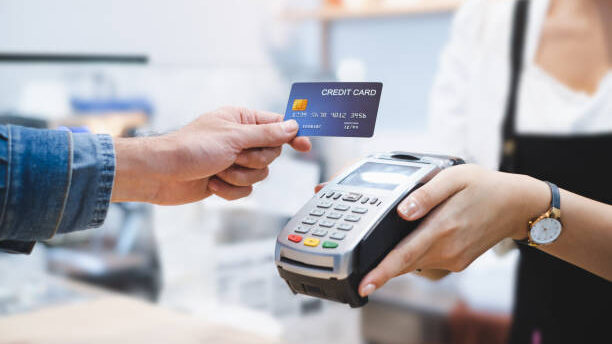Credit Card Industry Impact Of Contactless Payments

Our money-spending pattern has gone through various changes over the past centuries. We have come a long way from precious metals to Fiat currencies to digital currencies. Although the concept of contactless payment was not alien to many, the onset of the pandemic in recent years has given an upgrade to an ever-growing trend of making payments without inserting or swiping our cards. Since then, it has evolved into the number one choice for business owners and retailers, but what is the technology behind this bank credit card? Let us try to understand how it works.
Contactless payment either uses radio frequency identification (RFID) or near field identification to communicate with readers, and it is done with the help of cards, mobile wallets, or digital wallets. The card or the app should be close to the contactless reader by up to 2-4 inches to ensure that the initiated transaction is intentional. Depending on this, there are two types of contactless payments:
- Contactless cards: The card uses near-field identification to establish a connection with the point of sale; after this, the card generates a unique code to secure the transaction. Since no contact medium is involved, there is a limit to the number of transactions to be carried out in a day. This limitation is termed cardholder verification limit (CVM); fintech firms are progressing leaps and bounds to develop increased CVM limits for their consumers to boost the trend of contactless payment.
- E-Wallets: It is the most preferred mode of payment nowadays because paying using a UPI bank app is the most convenient, secure, and hassle-free process for buyers and sellers. Some famous mobile wallet payment systems worldwide include Google Pay, PayPal, Apple Pay, Mastercard, etc. The concept behind the secure system of digital wallets is tokenization, a token that stores all the confidential user data, which is highly prone to scams and cyber-attacks. The device never holds sensitive user information, but the token, in combination with RFID, helps provide seamless transactions and the safety of data.
Why should you consider using contactless modes of payment?
If we assess from the angle of user benefits, they are multiple.
Although the limit on daily transactions through this method may seem a disadvantage but, if we think logically, it’s a boon. There is always a threat looming over users’ minds about the theft that may occur as there is no physical security involved.But putting a limit on transactions can save significant amounts from being robbed from the bank account because the part above the threshold requires the user’s authorization.
For those using contactless cards, there is a high level of security involved throughout the transaction, which is relevant to the regular contact payment system regarding data protection. Even if the data transmitted from the card gets recorded through the reader, that data is highly encrypted and will not be valid for any third party collecting that.
Customer experience and satisfaction are the top priority for the fintech and banking organizations providing digital financial services and products. Hence, they are innovating these technologies to their full potentialso there is widespread adoption of digital wallets (bank UPI) and contactless methods of transactions of funds. It also acts as a cutting-edge tool for these firms to identify and analyze the purchasing trends of their customers.













